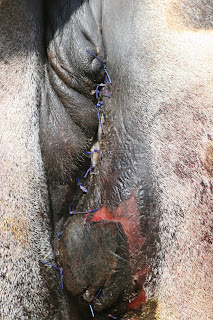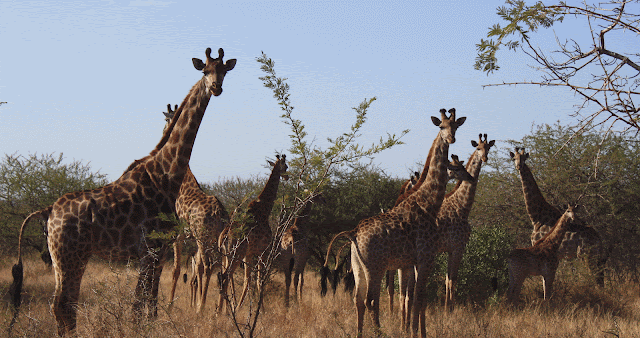




For 7 weeks we were trying to catch this young male lion. A snare was seen around his left paw and it was getting more and more painful. These pieces of wire in the shape of a loop attached to a tree are used by the locals to trap small antilopes to get an extra meal. Many other species, such as elephants, rhinos, giraffes, lions, leopards, wild dogs, kudus and other large antilopes, can also accidently step into it or walk through it, causing horrible suffering. The wire will be tight around the neck or a limp. Most animals are able to pull the wire off the tree, but the loop will stay around the neck or limb. Sadly it's impossible for most animals to get these snare off and they can only go tighter, never looser. The wire will cut deep into the skin and later throat (if around the neck) or tendons and even bone (if around a limb). A snare will always result in death if not removed. Unfortunately I have seen many horendous examples, but luckily most wild animals heal very quickly once the wire is removed.
It was very clear to us that we had to remove the wire to save the life of this amazing cat. But easier said than done! Catching a shy, wild lion is not an easy task. He and 2 lionesses were living dense bush and mountains. They were very wild and shy lions. Rangers could track them, but could never get closer than 50 meters. This is too far to be able dart the lion. Also in thick bush it is impossible to dart a lion, so we had to wait until they were in open terrain....and hungry.
We had been searching for this lion several times already over the past month. One night we had been waiting next to a bait, playing our 'lion capture music': a warthog in distress or singing hyenas after they got a prey. In both cases lions will check it out and come to the bait. Not this night. They were too far to hear to sounds or too shy. It was getting more and more urgent. He was observed limping badly on his left front leg. The wire would cut through his tendons soon. Time was running out.
Suddenly on a Thursday evening I got a phone call from the ranger that the lions were seen in open terrain. I advised him to throw a bait to keep them busy for while, packed my stuff and I jumped in the car. Luckily they were hungry and started eating. That would keep them in the open terrain for a while!
I arrived within an hour and immediately made up a dart. We put all medicines into the rangers open jeep and drove through the reserve in the dark. A spot light was lighting up the bush. I always have my rifle ready to shoot, as you never know when you're gonna see the animal. We often only get one chance, before a wild animal runs away, so shooting fast is important. After an approximately 45 minutes drive I asked the ranger if he had any idea how close the lions were. One second later a lioness crossed the road! The spot light cleared up her stunning body. Ten meter behind her the male followed. I noticed a limp, but he was walking better than expected. When his hind leg was open to get a good shot, I immediately pulled the trigger. The dart nicely hit the muscle. He growled and run off! We waited a few minutes to not stress him and then we started looking for him. Lions most times don't run far, which was also the case this time. He was sleeping beautifully under a tree. First we had to chase the other lions away. Then I approached the lion and pulled his tail to see how deep he was asleep. He was blinking his eyes and moving a little bit, so I topped up his anesthesia. Then we loaded him on the back of our jeep. In a safe place, far away from his dangerous girlfriends, I removed the snare, cleaned the wound and put some stitches. Luckily the tendons were still intact.
A day later the ranger called me that he was walking much better already. We were all tremendously happy and I am sure the lion too. He made a full recovery in only a week.


















































